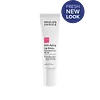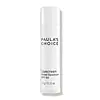What's inside
What's inside
 Key Ingredients
Key Ingredients

 Benefits
Benefits

 Concerns
Concerns

 Ingredients Side-by-side
Ingredients Side-by-side

Homosalate 5%
Skin ConditioningEthylhexyl Salicylate 5%
UV AbsorberButyl Methoxydibenzoylmethane 3%
UV AbsorberOctocrylene 2.5%
UV AbsorberPolybutene
Octyldodecanol
EmollientEthylhexyl Palmitate
EmollientCera Microcristallina
Emulsion StabilisingPolyethylene
AbrasivePolyglyceryl-2 Tetraisostearate
EmollientCocos Nucifera Oil
MaskingAroma
Silica Silylate
EmollientAdenosine
Skin ConditioningRetinyl Palmitate
Skin ConditioningLecithin
EmollientTocopherol
AntioxidantTocopheryl Acetate
AntioxidantIsononyl Isononanoate
EmollientIsopropyl Titanium Triisostearate
EmollientStearalkonium Hectorite
Gel FormingIsopropyl Myristate
EmollientPropylene Carbonate
SolventPolyhydroxystearic Acid
EmulsifyingSilica
AbrasiveCI 15850
Cosmetic ColorantIron Oxides
Titanium Dioxide
Cosmetic ColorantTin Oxide
AbrasiveMica
Cosmetic ColorantPhenoxyethanol
PreservativeCI 77742
Cosmetic ColorantBlue 1 Lake
Cosmetic ColorantCI 15985
Cosmetic ColorantCI 19140
Cosmetic ColorantCI 45380
Cosmetic ColorantCI 73360
Cosmetic ColorantCI 12085
Cosmetic ColorantCI 16035
Cosmetic ColorantHomosalate 5%, Ethylhexyl Salicylate 5%, Butyl Methoxydibenzoylmethane 3%, Octocrylene 2.5%, Polybutene, Octyldodecanol, Ethylhexyl Palmitate, Cera Microcristallina, Polyethylene, Polyglyceryl-2 Tetraisostearate, Cocos Nucifera Oil, Aroma, Silica Silylate, Adenosine, Retinyl Palmitate, Lecithin, Tocopherol, Tocopheryl Acetate, Isononyl Isononanoate, Isopropyl Titanium Triisostearate, Stearalkonium Hectorite, Isopropyl Myristate, Propylene Carbonate, Polyhydroxystearic Acid, Silica, CI 15850, Iron Oxides, Titanium Dioxide, Tin Oxide, Mica, Phenoxyethanol, CI 77742, Blue 1 Lake, CI 15985, CI 19140, CI 45380, CI 73360, CI 12085, CI 16035
Hydrogenated Olive Oil
Skin ConditioningPolyglyceryl-3 Diisostearate
EmulsifyingBeeswax
Emulsion StabilisingOzokerite
Emulsion StabilisingHomosalate
Skin ConditioningEthylhexyl Salicylate
UV AbsorberPolyethylene
AbrasiveButyl Methoxydibenzoylmethane
UV AbsorberMicrocrystalline Wax
Emulsion StabilisingOctocrylene
UV AbsorberTheobroma Cacao Seed Butter
EmollientSilica
AbrasiveTocopheryl Acetate
AntioxidantButyrospermum Parkii Butter Unsaponifiables
Skin ConditioningOlea Europaea Fruit Oil
MaskingTocopherol
AntioxidantHydrogenated Vegetable Glycerides Citrate
EmollientCopernicia Cerifera Wax
Water
Skin ConditioningPhenoxyethanol
PreservativeHydrogenated Olive Oil, Polyglyceryl-3 Diisostearate, Beeswax, Ozokerite, Homosalate, Ethylhexyl Salicylate, Polyethylene, Butyl Methoxydibenzoylmethane, Microcrystalline Wax, Octocrylene, Theobroma Cacao Seed Butter, Silica, Tocopheryl Acetate, Butyrospermum Parkii Butter Unsaponifiables, Olea Europaea Fruit Oil, Tocopherol, Hydrogenated Vegetable Glycerides Citrate, Copernicia Cerifera Wax, Water, Phenoxyethanol
Ingredients Explained
These ingredients are found in both products.
Ingredients higher up in an ingredient list are typically present in a larger amount.
Also known as Avobenzone, this ingredient is a chemical sunscreen filter that provides protection in the UV-A range.
Avobenzone is globally approved and is the most commonly used UV-A filter in the world.
Studies have found that avobenzone becomes ineffective when exposed to UV light (it is not photostable; meaning that it breaks down in sunlight). Because of this, formulations that include avobenzone will usually contain stabilizers such as octocrylene.
However, some modern formulations (looking at you, EU!) are able to stabilize avobenzone by coating the molecules.
Avobenzone does not protect against the UV-B range, so it's important to check that the sunscreen you're using contains other UV filters that do!
The highest concentration of avobenzone permitted is 3% in the US, and 5% in the EU.
Learn more about Butyl MethoxydibenzoylmethaneEthylhexyl Salicylate is an organic compound used to block UV rays. It primarily absorbs UVB rays but offers a small amount of UVA protection as well.
Commonly found in sunscreens, Ethylhexyl Salicylate is created from salicylic acid and 2-ethylhexanol. You might know salicylic acid as the effective acne fighter ingredient and BHA.
The ethylhexanol in this ingredient is a fatty alcohol and helps hydrate your skin, similar to oils. It is an emollient, which means it traps moisture into the skin.
According to manufacturers, Ethylhexyl Salicylate absorbs UV wavelength of 295-315 nm, with a peak absorption at 307-310 nm. UVA rays are linked to long term skin damage, such as hyperpigmentation. UVB rays emit more energy and are capable of damaging our DNA. UVB rays cause sunburn.
Learn more about Ethylhexyl SalicylateHomosalate is a chemical sunscreen filter that provides protection in the UV-B range (280nm - 320 nm), with a peak protection at 306 nm. It is internationally approved for use in sunscreens.
Homosalate is not photo-stable, meaning it's strength as a UV filter degrades over time with exposure to the sun. Because of this, it's often used in combination with other chemical sunscreen filters as avobenzone (which protects from the UV-A range). Homosalate also helps act as a solvent for harder-to-dissolve UV filters.
(Part of the reason that sunscreens need to be frequently re-applied is due to the photo instability of many chemical sunscreen filters)
Currently, homosalate is approved in concentrations up to 10% in the EU and 15% in the US. The FDA is currently doing further research on the effects of homosalate, and it is possible that these approved concentrations will change in the future.
Learn more about HomosalateOctocrylene protects skin from sun damage. It absorbs UV-B with peak absorption of 304 nm. It is a common sunscreen ingredient and often paired with avobenzone, a UVA filter. This is because octocrylene stabilizes other sunscreen ingredients by protecting them from degradation when exposed to sunlight. Octocrylene is a photostable ingredient and loses about 10% of SPF in 95 minutes.
Octocrylene also acts as an emollient, meaning it helps skin retain moisture and softens skin. It is oil-soluble and hydrophobic, enhancing water-resistant properties in a product.
Those who are using ketoprofen, a topical anti-inflammatory drug, may experience an allergic reaction when using octocrylene. It is best to speak with a healthcare professional about using sunscreens with octocrylene.
The EU allows a maximum of these concentrations:
Learn more about OctocrylenePhenoxyethanol is a preservative that has germicide, antimicrobial, and aromatic properties. Studies show that phenoxyethanol can prevent microbial growth. By itself, it has a scent that is similar to that of a rose.
It's often used in formulations along with Caprylyl Glycol to preserve the shelf life of products.
Polyethylene is a synthetic ingredient that helps the skin retain moisture. It is a polymer.
It is also typically used within product formulations to help bind solid ingredients together and thicken oil-based ingredients. When added to balms and emulsions, it helps increase the melting point temperature.
Silica, also known as silicon dioxide, is a naturally occurring mineral. It is used as a fine, spherical, and porous powder in cosmetics.
Though it has exfoliant properties, the function of silica varies depending on the product.
The unique structure of silica enhances the spreadability and adds smoothness, making it a great texture enhancer.
It is also used as an active carrier, emulsifier, and mattifier due to its ability to absorb excess oil.
In some products, tiny microneedles called spicules are made from silica or hydrolyzed sponge. When you rub them in, they lightly polish away dead skin layers and enhance the penetration of active ingredients.
Learn more about SilicaTocopherol (also known as Vitamin E) is a common antioxidant used to help protect the skin from free-radicals and strengthen the skin barrier. It's also fat soluble - this means our skin is great at absorbing it.
Vitamin E also helps keep your natural skin lipids healthy. Your lipid skin barrier naturally consists of lipids, ceramides, and fatty acids. Vitamin E offers extra protection for your skin’s lipid barrier, keeping your skin healthy and nourished.
Another benefit is a bit of UV protection. Vitamin E helps reduce the damage caused by UVB rays. (It should not replace your sunscreen). Combining it with Vitamin C can decrease sunburned cells and hyperpigmentation after UV exposure.
You might have noticed Vitamin E + C often paired together. This is because it is great at stabilizing Vitamin C. Using the two together helps increase the effectiveness of both ingredients.
There are often claims that Vitamin E can reduce/prevent scarring, but these claims haven't been confirmed by scientific research.
Learn more about TocopherolTocopheryl Acetate is AKA Vitamin E. It is an antioxidant and protects your skin from free radicals. Free radicals damage the skin by breaking down collagen.
One study found using Tocopheryl Acetate with Vitamin C decreased the number of sunburned cells.
Tocopheryl Acetate is commonly found in both skincare and dietary supplements.
Learn more about Tocopheryl Acetate